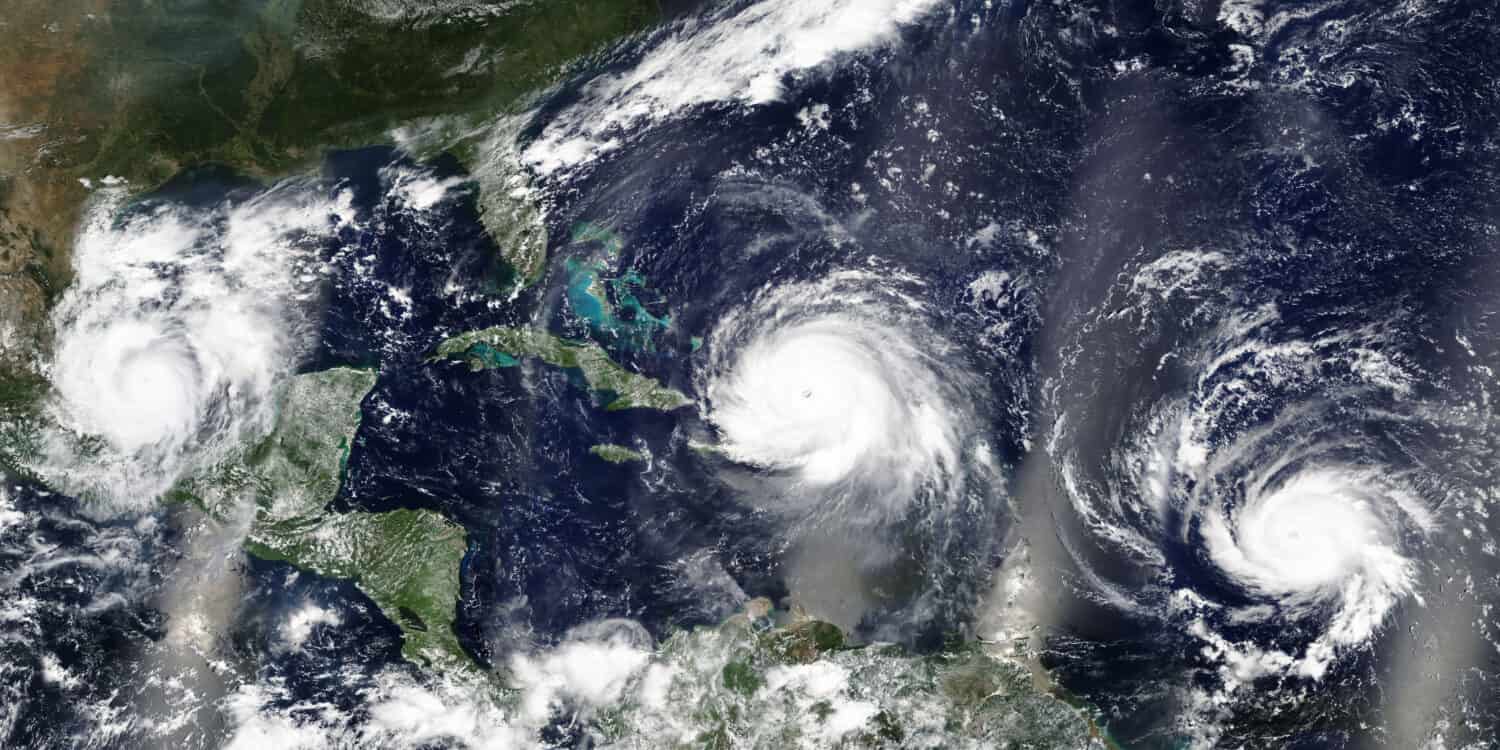Hurricanes are mighty forces of nature, borne of warm water, tropical waves, and low wind shear. These massive, swirling sea storms with collections of thunderstorms and squalls inside them can wreak havoc on human civilizations, as seen in the devastation left by Hurricanes Ivan, Sandy, Katrina, and Andrew.
Did you know that hurricanes make landfall in the U.S. in September more than any other month of the year? Keep reading to hear from an expert meteorologist why September is the perfect storm month for hurricanes, and discover the 9 most powerful hurricanes to have hit the U.S. in September.
Hurricanes in September
September weather, especially in the southeastern United States, creates a dangerous climate for hurricane formation.
Dr. Josh Eachus is the co-founder and Chief Meteorologist of YourCast and has over 15 years of forecasting experience. Eachus’s doctoral research and specialty are in providing people with useful context to weather forecasts and climate information to help with both short and long-term planning of events and travel.
In conversation with A-Z Animals, Dr. Eachus explained how September has the most hurricane landfalls in the United States — and why these September storms are the most powerful.
“From 1851 to 2022, 110 hurricanes have struck the country in September,” Dr. Eachus started. “As far as storm strength, it is important to know that the primary fuel source for hurricanes is warm ocean waters. Since waters are warmest in September, it should be no surprise that the month in total has produced hurricanes with the lowest average pressure and highest average maximum wind speed compared to any other month.”
Measuring Powerful Hurricanes
So how do professionals measure powerful hurricanes?
The “category” of a storm denotes how powerful it is, as outlined by the Saffir-Simpson Hurricane Wind Scale. This scale mainly focuses on how much damage the winds will incur where the hurricane makes landfall, ranging from dangerous (but preventable) damage to catastrophic loss.
| Category | Wind Speed (in miles per hour) | Damage Potential | Example Hurricane |
|---|---|---|---|
| 1 | 74 to 95 | Trees can topple; power lines and poles can snap. | Hurricane Katrina (2005) |
| 2 | 96 to 110 | Frame homes can get major roof or siding damage; possibility of near total power loss. | Hurricane Frances (2006) |
| 3 | 111 to 129 | Homes will sustain major damage, many uprooted trees will block roads, electricity and water may be unavailable for weeks | Hurricane Larry (2021) |
| 4 | 130 to 156 | Homes may lose most of the roof and/or exterior walls, power outages will last for months, area will be totally uninhabitable for weeks | Hurricane Donna (1960) |
| 5 | 157+ | Catastrophic damage to the community, including total destruction of framed homes, isolation of residential areas, and extensive power outages | Hurricane Andrew (1992) |
The 9 Most Powerful Hurricanes to Hit the U.S. in September
Between the late 1800s and today, 10 hurricanes in September have topped the charts for the most significant damage to the places they made landfall.
1. Hurricane Dorian (2019)
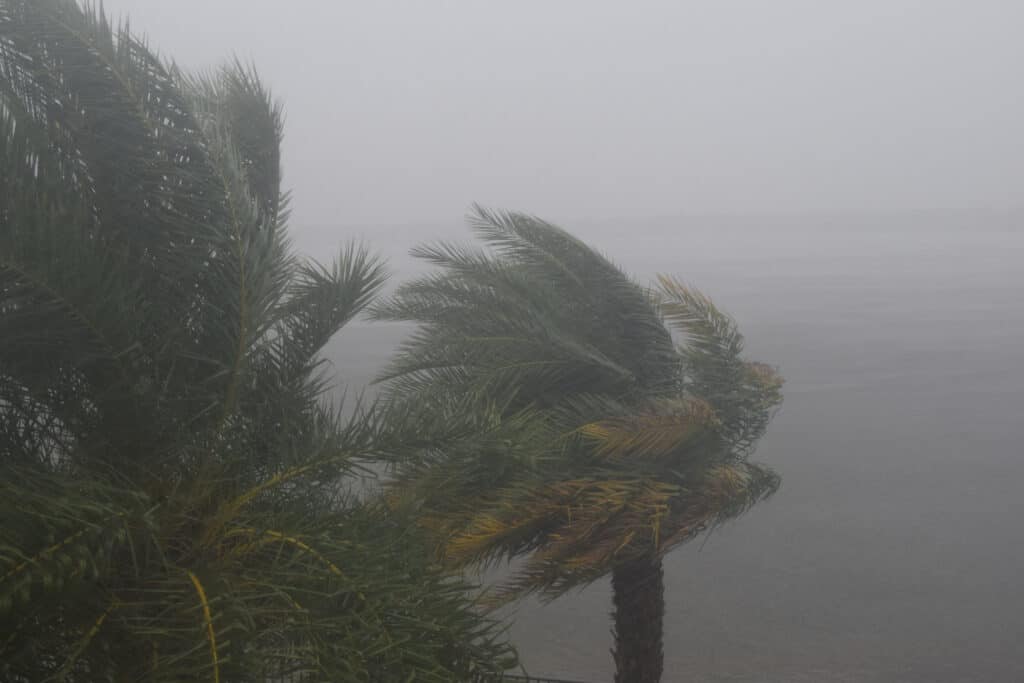
The massive, slow-moving Hurricane Dorian devastated the Gulf of Mexico in September 2019.
©LouiesWorld1/Shutterstock.com
Category: 5
Death toll: 84
Property damage: $5 billion
As the first major hurricane of the 2019 Hurricane Season, Dorian actually formed in August and didn’t make landfall on U.S. soil until September 6. While it hit the U.S. as a Category 1, it is one of the only September hurricanes on record to have sustained winds of 185 miles per hour or more. While Florida usually bears the brunt of the hurricane landfall, Hurricane Dorian chose North Carolina as its entrance point. On September 5, tornados began to touch down in the eastern parts of North Carolina. Much of the North Carolinian coast received rainfall between five and 10 inches as storm surge flooding began. Some residents became trapped in attics as waves of four to seven feet beat against houses.
2. Labor Day Hurricane (1935)
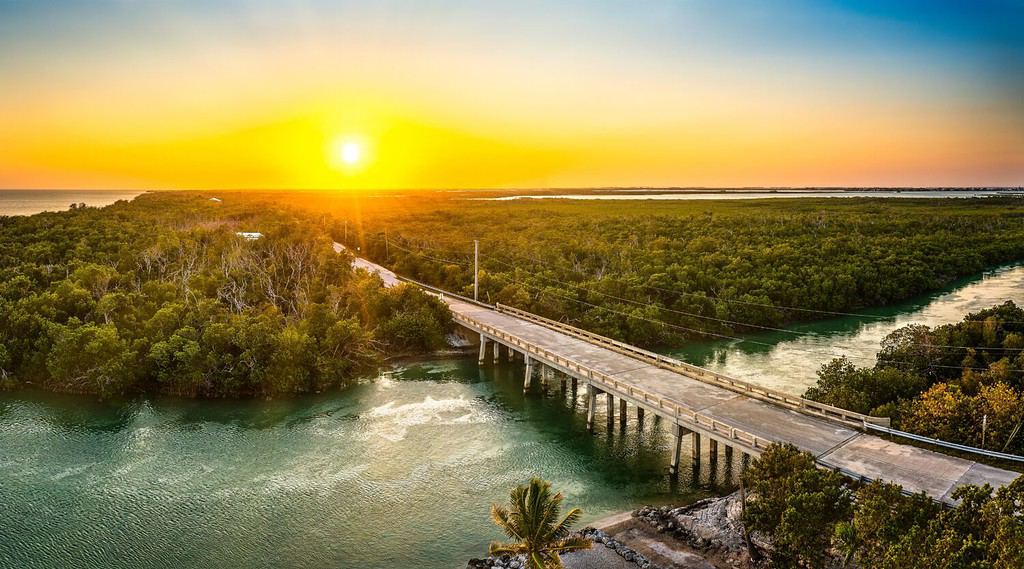
In 1935, the Florida Keys weathered a hurricane that brought 20-foot-tall tidal surges.
©Mihai_Andritoiu/Shutterstock.com
Category: 5
Death toll: 423
Property damage: $1.7 billion ($100 million USD in 1935)
Tied with Hurricane Dorian for the strongest landfalling Atlantic hurricane is the Labor Day Hurricane of 1935, which also had sustained winds of 185 miles per hour. Three different ships ran around during the storm and a relief train derailed. Storm surges ravaged the Florida Keys and the coast, resulting in waves of 18 to 20 feet tall. During the storm, most of the buildings between the towns of Tavernier and Marathon were destroyed. The hurricane completely obliterated the city of Islamorada. Many veterans died during the storm, as they lived in poorly protected work camps created for them as they worked on the Overseas Highway.
3. Hurricane Ian (2022)

Hurricane Ian did significant damage even to places that rarely experience hurricanes.
©lavizzara/Shutterstock.com
Category: 5
Death toll: 161
Property damage: $113 billion
Hurricane Ian was the deadliest hurricane to strike Florida since the Labor Day Hurricane of 1935. It traveled from a tropical wave off the coast of West Africa all the way through Jamaica, Cuba, the Gulf of Mexico, and finally to southwest Florida and Cayo Costa island. With sustained winds of 160 miles per hour, it remains one of the top five strongest hurricanes to make landfall in the U.S.
Flooding, heavy rains, and massive power outages affected most of southern Florida, as well as the Carolinas. Even northern states like New Jersey, Pennsylvania, Maryland, and New York felt the effects of Hurricane Ian.
4. Hurricane Maria
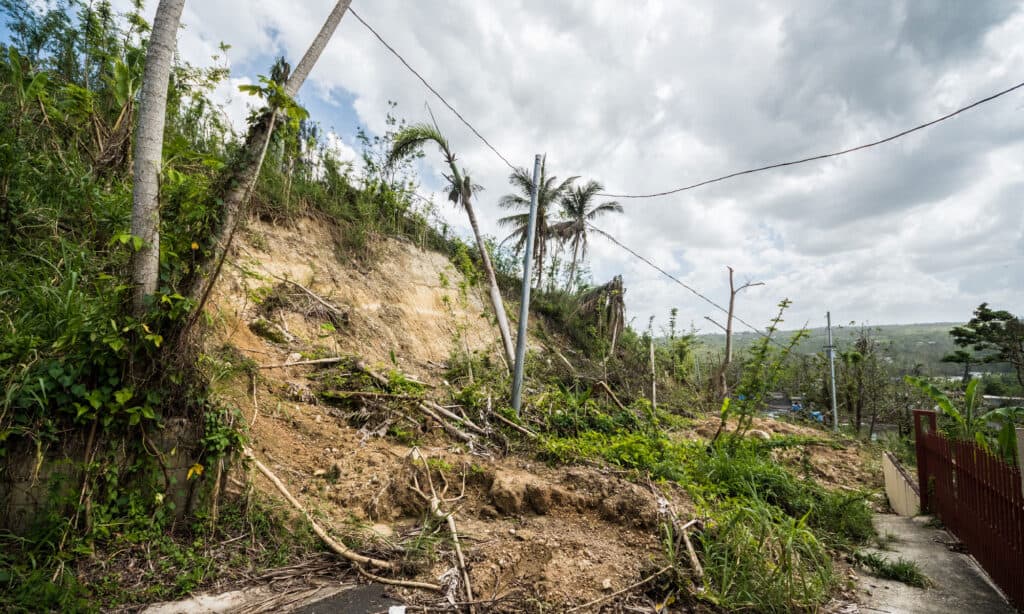
Hurricane Maria decimated Puerto Rico even after the storm with vicious mudslides.
©iStock.com/cestes001
Category: 5
Death toll: 2975
Property damage: $90 billion
Puerto Rico suffered greatly at the hands of Maria, which ranks as both the deadliest and the costliest hurricane to hit the U.S. territory in its history. Out of over 3,000 total deaths, Puerto Rico lost 2,975 people from its population to Maria.
While Hurricane Maria ranks as the most devastating hurricane to hit Puerto Rico and the Caribbean, only the tail edge of it caught the United States’s mainland. North Carolina’s Outer Banks felt tropical storm-like conditions that Maria brought to the region. While winds didn’t roar with 155 mile an hour gusts in the Carolinas like they did in Puerto Rico, the eastern seaboard felt the effects of Maria’s impact. Swimmers drowned thanks to the hurricane’s rip currents and storm surges in both the Jersey Shore and on Fernandina Beach, Florida.
5. Hurricane Irma (2017)
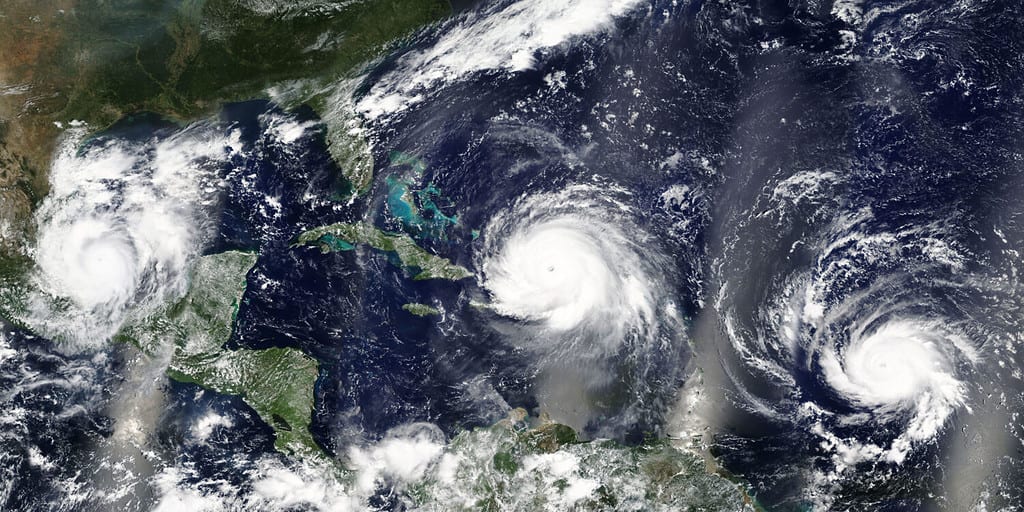
Hurricanes Irma, Jose, and Katia traveled close to each other in the Caribbean Sea and the Atlantic Ocean.
©lavizzara/Shutterstock.com
Category: 5
Death toll: 134
Property damage: $64 billion
Hurricane Irma ranks the seventh costliest U.S. Atlantic hurricanes after Sandy, Ida, Maria, Ian, Harvey, and Katrina. It caused billions of dollars in damage due to heavy winds and flooding, especially to the Florida Keys, which were the hardest hit out of every place Irma made landfall. While the Florida Keys weathered most of the damage — and Florida’s population accounted for many of the deaths — Georgia and South Carolina had several deaths as well. South Carolina also recorded the third highest storm surge for Irma at 10 feet tall.
6. Hurricane Ivan (2004)
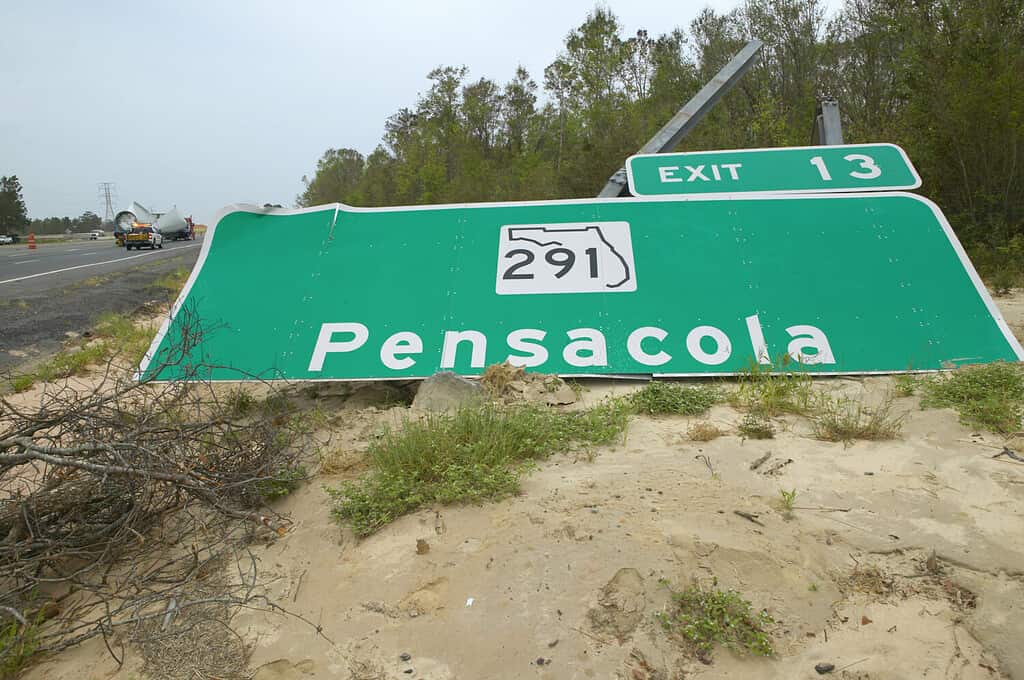
Hurricane Ivan felled trees, street signs, and more throughout Florida.
©Joseph Sohm/Shutterstock.com
Category: 5
Death toll: 124
Property damage: $23 billion
Hurricane Ivan made landfall on September 16, 2004 in Alabama. It would go on to decimate towns in Mississippi, Florida, Georgia, and North Carolina. A quarter mile of Interstate 10 in Pensacola collapsed into the Bay and two five-story, steel-reinforced condos in Alabama collapsed with Ivan’s 14-foot storm surges. While Ivan remained the costliest hurricane to Alabama, the state didn’t suffer a single casualty to the hurricane.
The hurricane’s effects were far-reaching — even the northern states of Delaware, New Hampshire, Connecticut, and Massachusetts saw rain, flooding, and mudslides. A boater in Long Island Sound perished from an unexpected 50-knot wind coming from Ivan’s wrath, and Maryland received a slew of tornados.
7. San Felipe-Okeechobee Hurricane (1928)

The 1928 San Felipe-Okeechobee Hurricane claimed over 2,500 lives.
©Everett Collection/Shutterstock.com
Category: 5
Death toll: 4,112
Property damage: $1.7 billion
Making landfall in West Palm Beach with 145 mile and hour winds, the San Felipe-Okeechobee Hurricane of 1928 destroyed thousands of homes, flooding areas up to 20 feet high, and drowning over 2,500 residents of Okeechobee. Not only did the hurricane make a second landfall in South Carolina, but it also became extratropical and caused damage in Georgia, Florida, the Carolinas, Virginia, and New Jersey.
The San Felipe-Okeechobee Hurricane exacerbated racial tensions that were already high, especially when it came to burial procedures. White victims received formal burial services and caskets while the families of African American victims of the hurricane were left to mourn their loved ones at funeral pyres and mass burial sites. Accomplished author Zora Neale Hurston used the injustice as inspiration for her best-known work, Their Eyes Were Watching God.
8. Hurricane Ike (2008)

Hurricane Ike’s outer bands impacted the Florida coast in September 2008, throwing waves dozens of feet up on the pier.
©forestpath/Shutterstock.com
Category: 4
Death toll: 214
Property damage: $30 billion
Hurricane Ike follows Irma as one of the costliest hurricanes to hit the United States, incurring over $30 billion of damage. During Ike’s landfall, most of the hardest-hit places were in Louisiana and Texas. However, when Ike became extratropical, it provoked hurricane-gust-like winds as far north as Columbus and Cincinnati.
During Ike’s landfall, a cargo ship that had attempted to evacuate sat stagnant in Port Arthur’s waters. With the impending hurricane, the Coast Guard couldn’t hail the ship’s evacuation request, so the ship’s 22 crew members had to wait out the storm on the ship. Thankfully, no one was hurt and once Ike passed, the Coast Guard dispatched a tugboat that brought the cargo ship back to port.
9. Great Galveston Hurricane (1900)
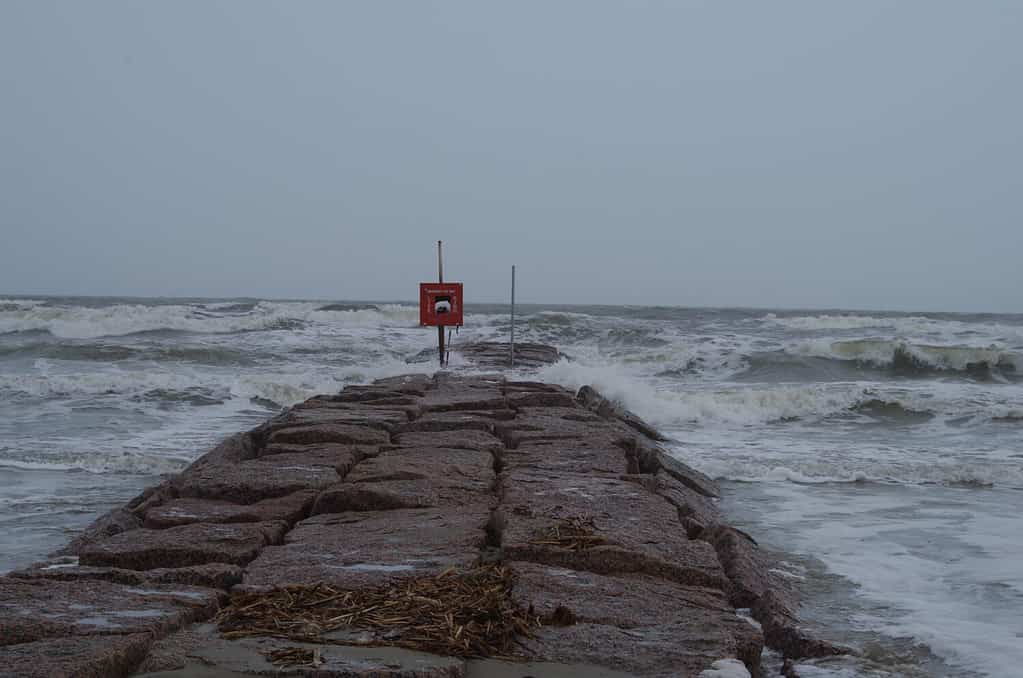
Thousands of Galveston residents died from drowning during the 1900 hurricane.
©gaadland/Shutterstock.com
Category: 4
Death toll: Between 6,000 and 12,000
Property damage: $1 billion ($28 million USD in 1900)
Considered the deadliest natural disaster in United States history, the Great Galveston Hurricane of 1900 claimed thousands of lives. It essentially destroyed all of Galveston — with losses that the U.S. Weather Bureau may have been able to prevent if it had better communication strategies.
While the storm sustained prolonged periods of 120-mile-an-hour winds, saltwater drowning caused most of the deaths. Why? The 16-foot storm surges washed repeatedly over Galveston Island, breaking buildings to pieces and destroying any place once thought safe.
Summary of the 9 Most Powerful Hurricanes to Rip the U.S. in September By Category And Property Damage
| Rank | Hurricane | Category | Death Toll | Property Damage |
|---|---|---|---|---|
| 1 | Hurricane Dorian (2019) | 5 | 84 | $5 billion |
| 2 | Labor Day Hurricane (1935) | 5 | 423 | $1.7 billion |
| 3 | Hurricane Ian (2022) | 5 | 150 | $113 billion |
| 4 | Hurricane Maria (2017) | 5 | 2975 | $90 billion |
| 5 | Hurricane Irma (2017) | 5 | 134 | $64 billion |
| 6 | Hurricane Ivan (2004) | 5 | 124 | $26 billion |
| 7 | San Felipe-Okeechobee Hurricane (1928) | 5 | 4112 | $1.7 billion |
| 8 | Hurricane Ike (2008) | 4 | 214 | $30 billion |
| 9 | Great Galveston Hurricane (1900) | 4 | 8,000 | $1.25 billion |
September Storms Surge in Strength
In total, the nine most powerful hurricanes to hit the U.S. in September caused a combined $333.95 billion of damage and killed 11,016 people. As Dr. Eachus stated, September provides peak conditions for large, lumbering storms to form and make landfall. When faced with a potential hurricane, ensure you have the proper preparations in place. Know where and how to find shelter, have enough food and water for several days, and make plans for ensuring the safety of vulnerable family members like seniors, infants, and pets.
Thank you for reading! Have some feedback for us? Contact the AZ Animals editorial team.

